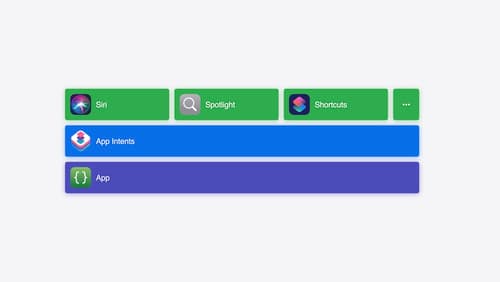so what are the key new features in iOS 7 that developers should focus on?
Asked on 2024-08-06
1 search
Key New Features in iOS 18 for Developers
Customizable Controls
iOS 18 introduces new customizable controls that make it easier for users to interact with your app from various parts of the system. Using the new controls API, developers can create controls that can toggle settings, execute actions, or deep link to specific experiences. These controls can be added to the control center, assigned to the action button on the iPhone 15 Pro, or appear on the lock screen. This feature enhances user engagement by making frequent tasks more accessible.
App Icons and Widgets
App icons and widgets in iOS 18 can now appear in light, dark, or tinted versions. This ensures a consistent visual experience across the home screen. Developers can customize each version of their app icon to maintain design intent and legibility. Xcode supports dark and tinted app icon variants, which can be easily added to the asset catalog.
Passkeys
iOS 18 continues to improve security with passkeys, a more secure and user-friendly replacement for passwords. A new registration API has been introduced to help transition more users to passkeys seamlessly, offering faster sign-in, fewer password resets, and reduced support costs.
RealityKit 4
RealityKit 4 is now available across macOS, iOS, and iPadOS, simplifying the development of 3D and spatial experiences. This framework supports various rendering styles and includes tools like Reality Composer Pro, making it easier to build immersive apps.
UIKit Enhancements
UIKit in iOS 18 has several enhancements:
- Document Launch Experience: Redesigned to showcase the app's identity and provide a better user experience for document creation.
- Tabs and Sidebar: Major updates to improve navigation.
- Fluid Transitions: New fluid transitions across the system for a more delightful user interface.
- SwiftUI Integration: Improved integration between UIKit and SwiftUI, allowing for more flexible and powerful UI designs.
SwiftUI Improvements
SwiftUI in iOS 18 includes:
- Custom Controls: Developers can create custom resizable controls like buttons and toggles that can be used in the control center or lock screen.
- Enhanced Animations and Transitions: New tools for creating more dynamic and engaging UI animations.
App Intents
App Intents allow developers to elevate their app's features across the system. This includes adding widgets to the home screen, lock screen, or control center, making it easier for users to access important information and actions without opening the app.
For more detailed information, you can refer to the following sessions:
- Platforms State of the Union (44:17)
- What’s new in UIKit (00:07)
- What’s new in SwiftUI (02:55)
- Bring your app’s core features to users with App Intents (04:09)

Platforms State of the Union
Discover the newest advancements on Apple platforms.

Bring your app’s core features to users with App Intents
Learn the principles of the App Intents framework, like intents, entities, and queries, and how you can harness them to expose your app’s most important functionality right where people need it most. Find out how to build deep integration between your app and the many system features built on top of App Intents, including Siri, controls and widgets, Apple Pencil, Shortcuts, the Action button, and more. Get tips on how to build your App Intents integrations efficiently to create the best experiences in every surface while still sharing code and core functionality.

What’s new in SwiftUI
Learn how you can use SwiftUI to build great apps for any Apple platform. Explore a fresh new look and feel for tabs and documents on iPadOS. Improve your window management with new windowing APIs, and gain more control over immersive spaces and volumes in your visionOS apps. We’ll also take you through other exciting refinements that help you make expressive charts, customize and layout text, and so much more.
